A big part of conscious and sustainable travel is learning about the cultural aspects of the country you’re visiting. And in New Zealand, this means learning about NZ’s customs, and more specifically, Māori traditions and legacy.
You can do that by visiting the Te Papa museum in Wellington, the Te Kōngahu Museum of Waitangi in Bay of Islands, the Auckland War Memorial Museum in Auckland, the Okains Bay Māori and Colonial Museum in Canterbury, but the best immersive experience is to visit a Māori village.
Here’s everything to know about the Māori cultural experience, including cultural etiquette, the Haka performance, traditional Māori food and its preparation in an earth oven, and what the face tattoos mean.

As someone who seeks authentic and ethical experiences, I was mildly concerned that the Māori cultural experience would feel performative and not genuine. But it obviously has to be somewhat performative because there’s no chance of me randomly encountering a group of Māori people dressed in traditional clothes and willing to talk to me about their culture for a few hours, and also make me food. Also, a cultural performance and show does not necessarily mean it’s not authentic, and we were assured during the welcome part of the activity that the money goes back into the community.
The experience turned out to be really informative and interesting, with a unique glimpse into Māori culture and history, traditions, their connection to nature, and more.
Most of the Māori villages, where you get to see a Haka performance and learn about daily life and traditions, are in the Rotorua region, an area rich in natural hot springs. Some (if not most) also offer dinner prepared in the traditional Māori way.
Insider tip: It’s more convenient to rent a car and drive there than take public transportation, but most people choose to book group tours (linked below) with convenient pickup and drop-off service. We stayed in Rotorua for a couple of nights and rented a car.
There are a few Māori villages to choose from:
Here’s a breakdown of my Māori cultural experience at Mitai Māori village.
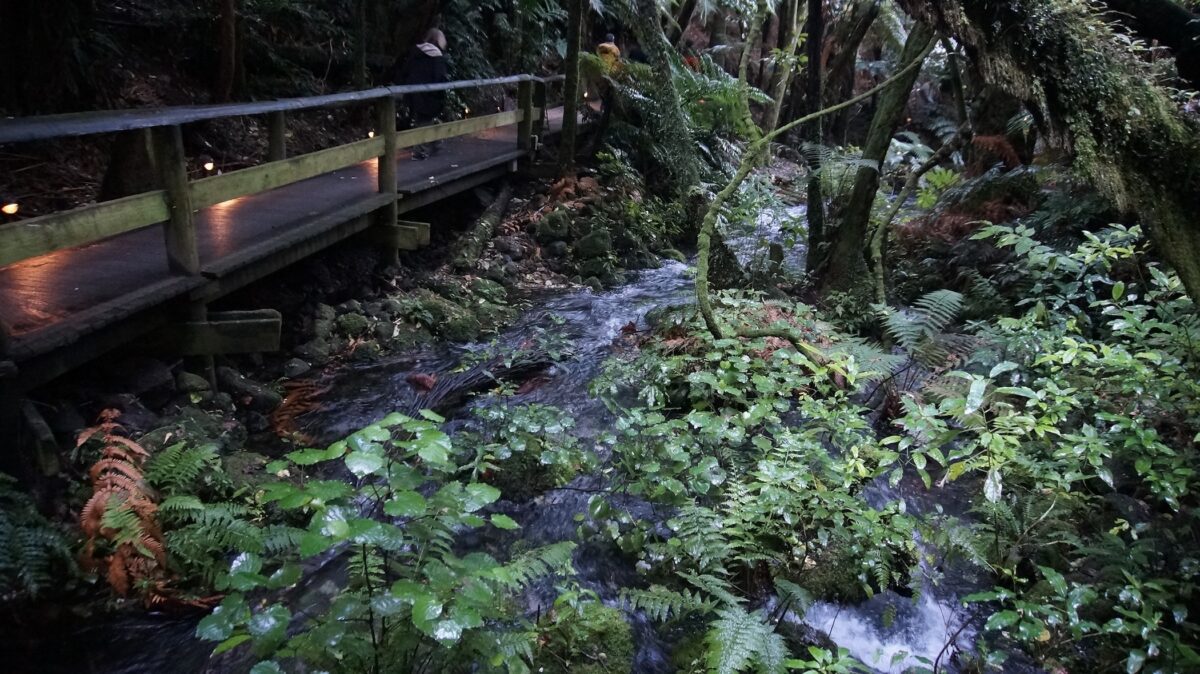
After parking on site, we all gathered in the dining hall, where the hostess welcomed us and gave us an overview of Māori history, and also explained how our ticket purchases for this experience go directly back into the community.
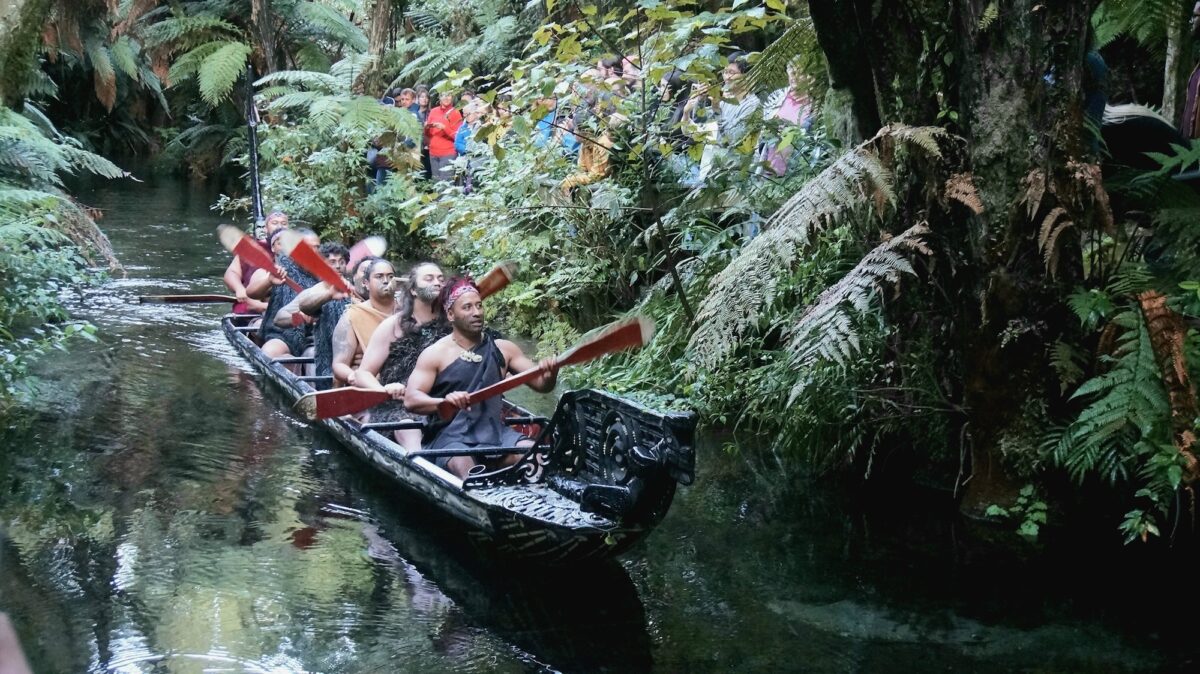
Most Māori cultural experiences start with the traditional welcoming ceremony (pōwhiri), but at Mitai we got to first do a bush walk and explore the surrounding natural springs, where we saw a group of Māori coming up the Wai-o-Whiro stream in a war canoe. This was our first glimpse into the Māori world.
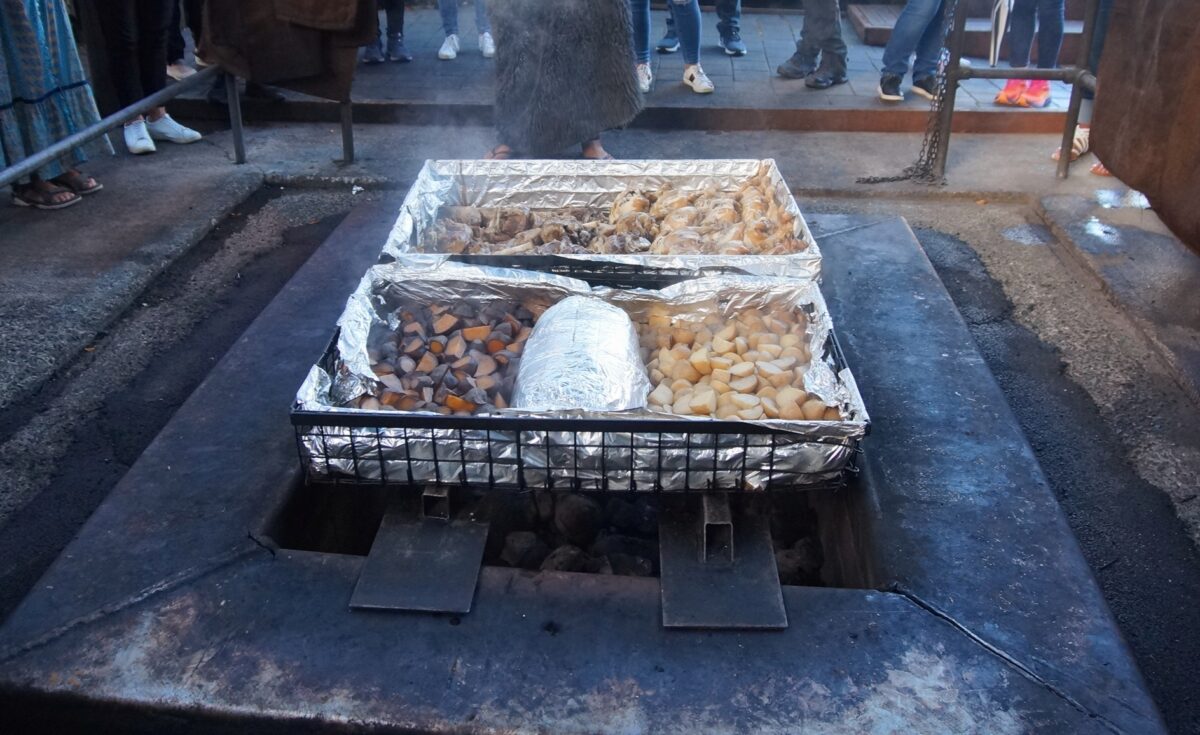
After the bush walk and canoe arrival, we were shown how the food was being prepared, in a traditional Māori cooking method called hāngī, using an earth oven.
This is how hāngī works:
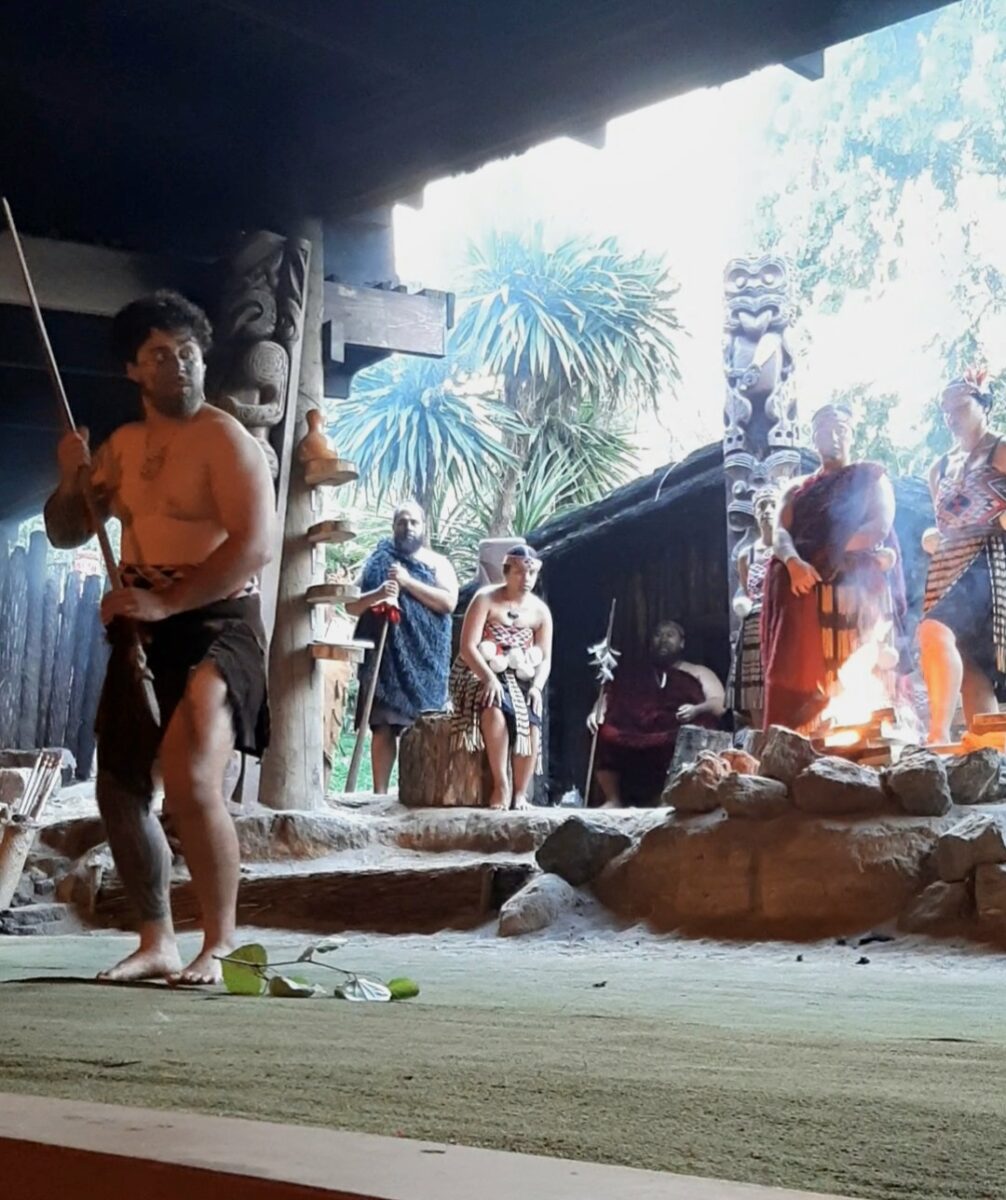
And now for one of the most important activities of the Māori cultural experience: pōwhiri, the traditional welcome ceremony. The pōwhiri is a symbolic ceremony to represent the Māori welcoming us into their world, and is an invitation to experience their culture with a respectful and open mindset.
Insider tip: It’s considered very disrespectful to smile or laugh at any point during the pōwhiri ceremony. And if you’re selected from the audience to participate in the ceremony, you might automatically feel tempted to smile in greeting or as a response, but please refrain from doing so.
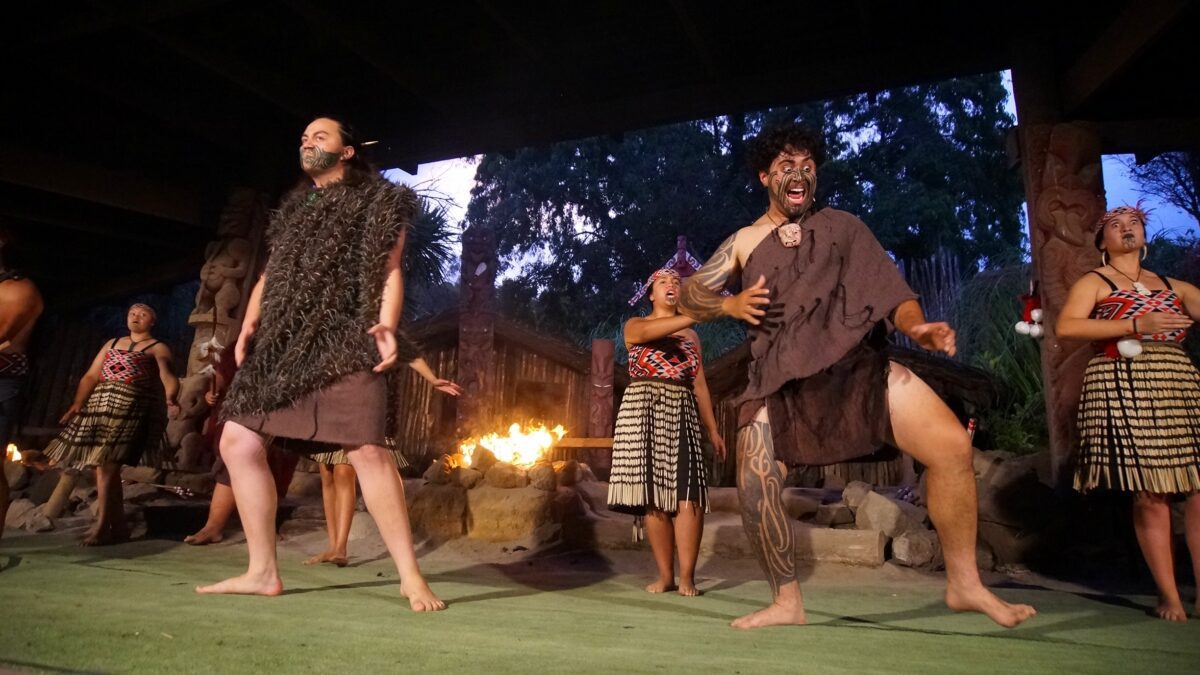
After the pōwhiri, we stay seated in the same area to see the Haka performance.
Fun fact: A few traffic lights in NZ have a haka figure instead of a circle for the lights. We saw one near the Te Papa museum in Wellington.
After the Haka performance, it was time to go back to the dining hall for our buffet dinner. Everything was very well organised, and we took turns to get our meals. The food tasted fresh and was delicious.
Insider tip: Traditional Māori food and main dishes all contain meat, and there are no vegan-only options, though there were plenty of vegetables.
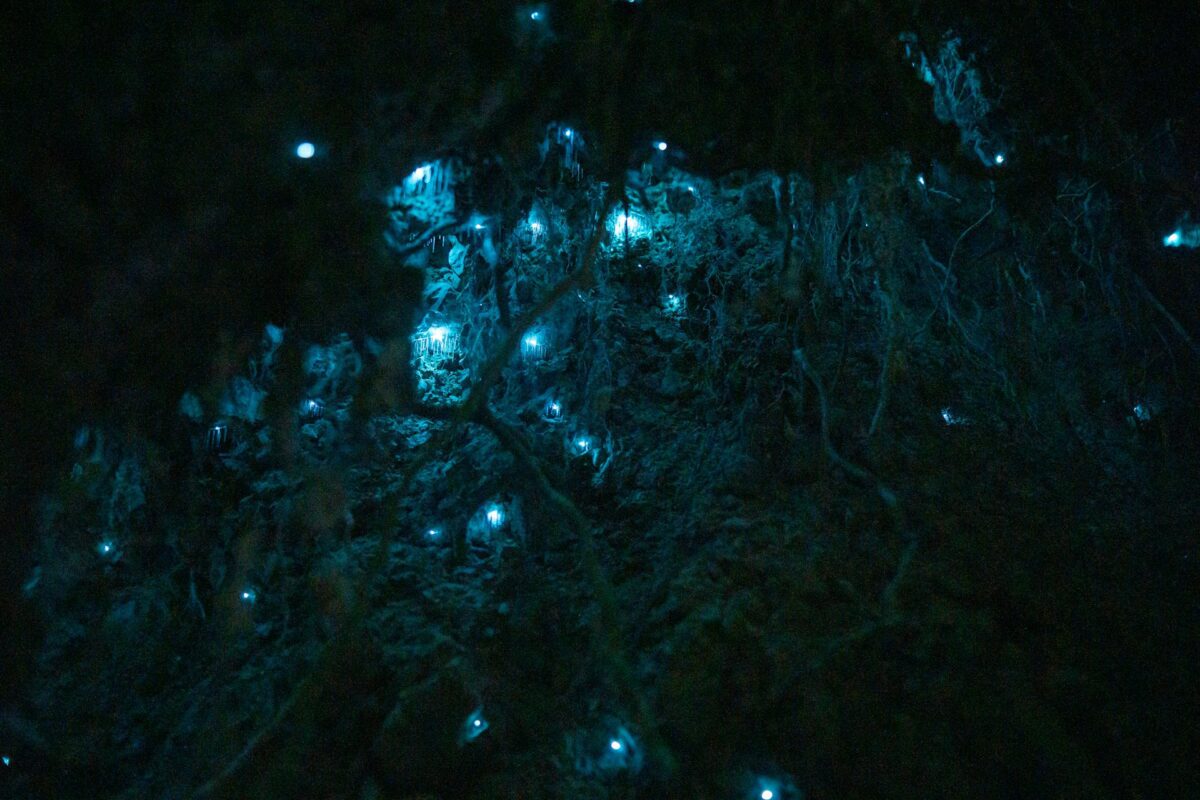
The final activity during the Māori cultural experience was another walk around the village, where we saw glowworms. Glowworms are larvae that look like worms, and they are bioluminescent (they emit a glowing light to attract prey). You can also see glowworms on a tour of the Waitomo Caves.
Māori are the indigenous people of New Zealand, having arrived there by large canoes around the 13th century CE. They are of Polynesian descent.
Do not smile or laugh during rituals and ceremonies, including the traditional welcome greeting or the Haka performance; remove your shoes before entering a house; do not touch another person’s head without permission; do not take photos of people without permission (though this one applies to every culture). More NZ and Māori cultural etiquette here.
In my opinion, yes it’s worth it, because I got so much first-hand, insider knowledge that I would not have gotten from museums. The performances were also very interesting to see, and the food was tasty.
